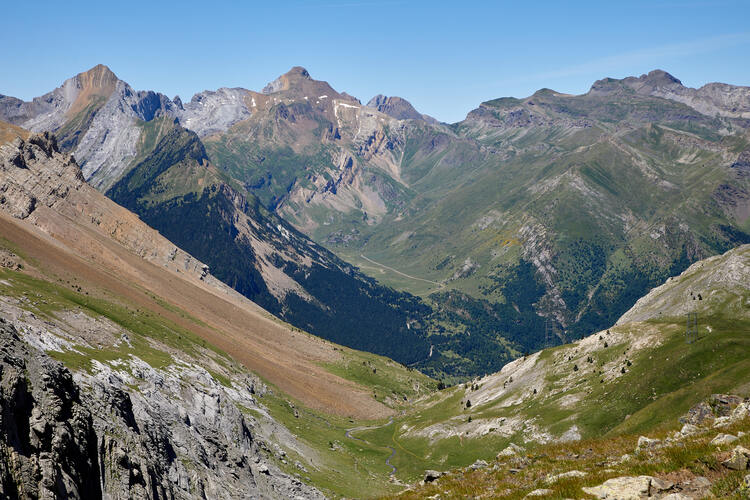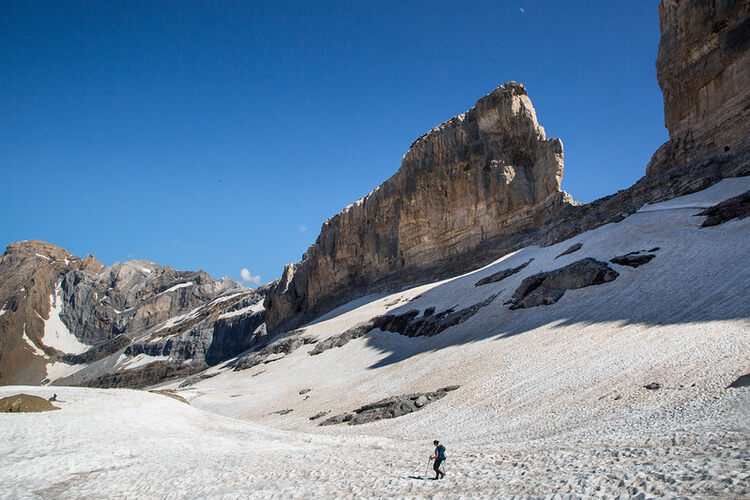
Scientists have discovered a massive insect migration across one particular mountain pass in the Pyrenees
By
The Pyrenees mountains, which form a natural barrier between France and Spain, are a special place. Not only are these mountains scenically stunning, but they’re also one of only a handful of places on Earth to have been granted Unesco World Heritage, Biosphere and Geopark status, it’s also one of those rare zones where populations of almost all large animals, including bears, wolves, ibex (though these have been re-introduced after the native Pyrenean ibex went extinct) and many others are actually increasing. Not just that, though, but the Pyrenees have long been known for their extraordinary bird life, which includes the annual passage of tens of thousands of migrating birds who pass over certain passes (particularly in the western Pyrenees).
Now though, it seems that it’s not just birds who migrate through Pyrenean passes. A study by the University of Exeter has revealed that one particular high pass in the central Pyrenees is a major migration highway for millions upon millions of flying insects.
The Collado de Bujaruelo (Bujaruelo Pass; 2271m) is a thirty-metre-wide gap in a solid wall of iconic 3000m high mountains, which includes Mont Perdu/Perdido and the Vignemale. Other notable land features include the huge Cirque de Gavarnie immediately to the east and the Ordesa Canyon just southeast. Although there are other passes in the vicinity, these tend to be much higher. For this reason the Collado de Bujaruelo is the easiest and safest gateway in the central Pyrenees between France and Spain for both humans and wildlife. But even so, the discovery that millions of insects were using this pass to cross from northern to southern Europe has come as something of a revelation even if it was not a total surprise.
Will Hawkes, from the Centre for Ecology and Conservation at Exeter University and a member of the study team, said: ‘More than 70 years ago, two ornithologists – Elizabeth and David Lack – chanced upon an incredible spectacle of insect migration at the Pass of Bujaruelo. They witnessed remarkable numbers of marmalade hoverflies migrating through the mountains, the first recorded instance of fly migration in Europe. In 2018, we went to the same pass to see if this migration still occurred, and to record the numbers, species, weather conditions and ecological roles and impacts of the migrants’.
To do this the team used a combination of video cameras to count the small insects, visual counts to quantify the butterflies, and a flight intercept trap to identify the species migrating, the team discovered that not only were there still vast numbers of marmalade hoverflies passing through, but far more besides. According to Hawkes, ‘There were some days when the number of flies was well over 3,000 individuals per metre, per minute.’

Team leader Dr Karl Wotton said, ‘To see so many insects all moving purposefully in the same direction at the same time is truly one of the great wonders of nature.’ Dr Wotton continued, ‘The combination of high-altitude mountains and wind patterns render what is normally an invisible high-altitude migration into this incredibly rare spectacle observable at ground level.’
A range of insects were seen, but flies made up 90 per cent of the total. Butterflies and dragonflies are well-known migratory insects, but these make up less than two per cent of the total. Many of the migrants were well-known garden inhabitants, such as the cabbage white butterfly (Pieris rapae), the house fly (Musca autumnalis), and even minuscule grass flies (Chloropidae) that are barely 3mm long.
It’s thought that these insects would have begun their journeys further north in Europe and continued south into Spain, and perhaps beyond, for the winter. Referring to the event, Hawkes added, ‘It was magical. I would sweep my net through seemingly empty air and it would be full of the tiniest of flies, all journeying on this unbelievably huge migration.’
Although the mass movement of such tiny creatures may seem inconsequential, migratory insects, especially flies, are important to the well-being of our planet. Nearly 90 per cent of the insects heading over the pass are pollinators, and by migrating, they move genetic material great distances between plant populations, which helps improve plant health.
The researchers said that while some of the insects were pest species, many were pest controllers, including the marmalade and pied hoverflies that eat aphids during their larval stage. Many other species, they said, play a role in decomposition, and all transport nutrients such as phosphorous and nitrogen large distances, which could be important for soil health and plant growth.
Due to the climate crisis and habitat loss, these vital insect migrants are thought to be declining. Although both sides of the pass are already strictly protected national parks, it’s hoped that the latest research will further help aid conservation efforts.
Related articles:




